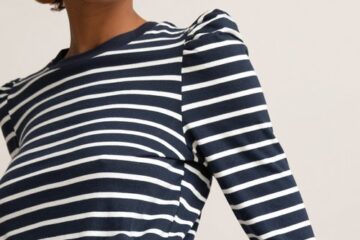Make Your Business
More Visible Online
- in
Select Location
No options
Loading options...
{{ option.count }}
Increase the chances of selling your products.
Show new product to a large number of people and create an interest for the release.
Establish a brand identity and make a difference between your products and other businesses.
Check out what's new
New Fashion Ads
All
Accessories
Beauty
Clothing
Fragrances
Jewelry



Cashmere 3 quarter senator
₦40,000
1 Old Anwai Rd, Isieke, Asaba 320242
Delta
Quick preview
Add to compare
Add to favorites
267 Views





Everything Women Bags
₦10,000
Mable Hill, Asaba
Delta
Quick preview
Add to compare
Add to favorites
328 Views

Adore Kampala
₦6,000
Awoyaya bus stop, Ibeju Lekki
Lagos
Quick preview
Add to compare
Add to favorites
418 Views
Featured





JAE Collection
₦29,500
Greenland estate along Lagos Ibadan express way
Ogun
Quick preview
Add to compare
Add to favorites
475 Views





Elina’s stitches
₦25,000
Lagos Mainland, 101016
Lagos
Quick preview
Add to compare
Add to favorites
621 Views
Featured



Real Celebrity Shoemaker
₦16,000
Bonsac, Asaba
Delta
Quick preview
Add to compare
Add to favorites
822 Views
Explore the best & famous things
Choose the category of the product
you are looking for
Check out our categories to find an offer that you probably can’t resist.
News
From our blog

Sold out $600 Designer Pee-stain Jean by Jordanluca
Happy Emerie
Who knew that peeing on your pants would be considered fashionable? British-Italian designer Jordanluca thought so and surprisingly they were not wrong considering the amount of sales they made from the ‘pee-stain’ jean pants. The jeans officially debuted at the brand’s Fall/Winter 2023 show during Milan Fashion Week according to ‘The New York Post’. When […]

What The University Of Fashion Package For Students
admin
The University of Fashion UoF is an online library filled with hundreds of well-produced video lessons teaching all aspects of fashion design, covering lectures on draping, pattern making, sewing, fashion art, knits, business, CAD fashion art, CAD pattern making, product development, accessories, lectures and more! All lessons are conducted by preferred fashion professors from prestigious […]

The5kShop: An Online Fashion Retail Store Where Every Product Costs ₦5,000 Only
Happy Emerie
I know it may sound too good to be true, but yes! The5kshop offers a variety of fashion products ranging from co-ords, tribal attires, and accessories. The creative concept of keeping every item at ₦5,000 and below is fascinating, to say the least as this might be the first of its kind in Nigeria. The5kShop […]

JAE Fashion Brand Launches Her Latest Corporate Ready-to-Wear Collection
Happy Emerie
Nigerian-based fashion brand JAE recently launched her latest piece of work from its atelier which many consider the most stylish corporate ready-to-wear dresses you can rock to the office or formal events. This release is the very first of its kind from the Ace fashion brand and it was with excitement and merriment that the […]
What our clients say
Testimonials
Chinonso Okonkwo
Sales manager
Asoebi Guest isn't just a website; it's a complete styling solution. From outfits to accessories and styling tips, it's my first destination for all fashion and beauty things.
Fatima Ibrahim
Marketing specialist
Looking for attires on Asoebi Guest was a revelation to me; its diverse range of options and user-friendly interface made the experience enjoyable and stress-free!
Omamuyovwi Oghenekaro
Project manager
Being a part of the Asoebi Guest community is like having a fashion family; surrounded by like-minded individuals, I find endless inspiration and creativity to elevate my style.
Uchechi Nwachukwu
Office assistant
Coordinating my bridal party's attire was seamless with Asoebi Guest; the platform not only provided stunning options but also helped us achieved a cohesive and stylish look.
Oluwaseun Olatunji
Designer
I've become the center of attention at every event; its curated selection of unique designs and exquisite pieces ensures I stand out in the best possible way.
Sign Up to receive the latest updates and news
Useful Links
Categories
Newest Listings

Cashmere 3 quarter senator
₦40,000

Everything Women Bags
₦10,000

Adore Kampala
₦6,000

JAE Collection
₦29,500
© 2024 Asoebi Guest Fashion. All rights reserved.




